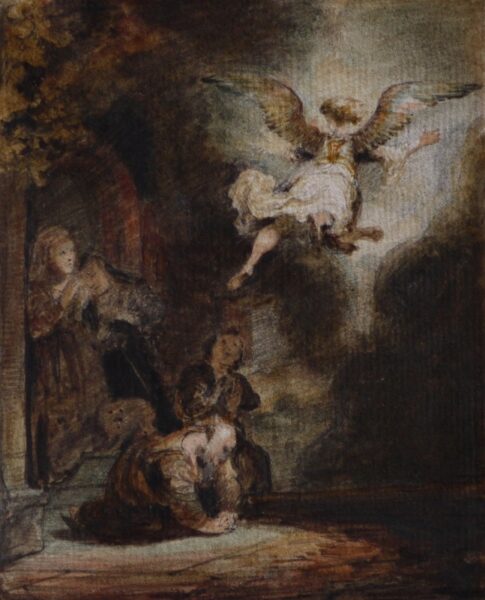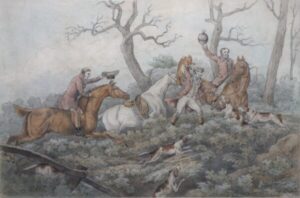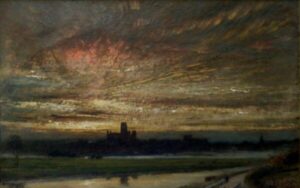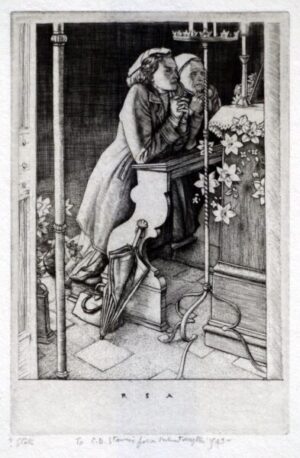Wilkie, Sir David (1785-1841)
A minister's son, David Wilkie studied painting in Edinburgh, despite his parents' misgivings about the occupation. His ambition led him to London, where he entered the Royal Academy schools. In 1806 he made his name with a modern genre painting, The Village Politicians, beginning a life of much-admired paintings of everyday scenes. In 1822, when exhibiting a wildly popular work, Chelsea Pensioners Reading the Gazette after the Battle of Waterloo, the Royal Academy took the unprecedented step of erecting barriers around it.
Wilkie's style evolved primarily due to study trips abroad. In 1814 and 1821 he visited Paris, Belgium, and The Netherlands, where he studied art by Rembrandt Harmensz. van Rijn, Titian, and Peter Paul Rubens. As a result, he expressed emotions more sharply, deepened his shadows, and made his colour stronger and his paint smoother. To recuperate from a nervous breakdown after overwork and the deaths of his mother and two brothers, Wilkie spent the mid-1820s in Italy, Austria, Germany, and Spain, he was also in Paris again briefly, in 1828. He then adopted a broader style and began working on history paintings, diminishing his popularity among both public and critics. After visiting the Holy Land to research religious paintings, he died and was buried at sea.



